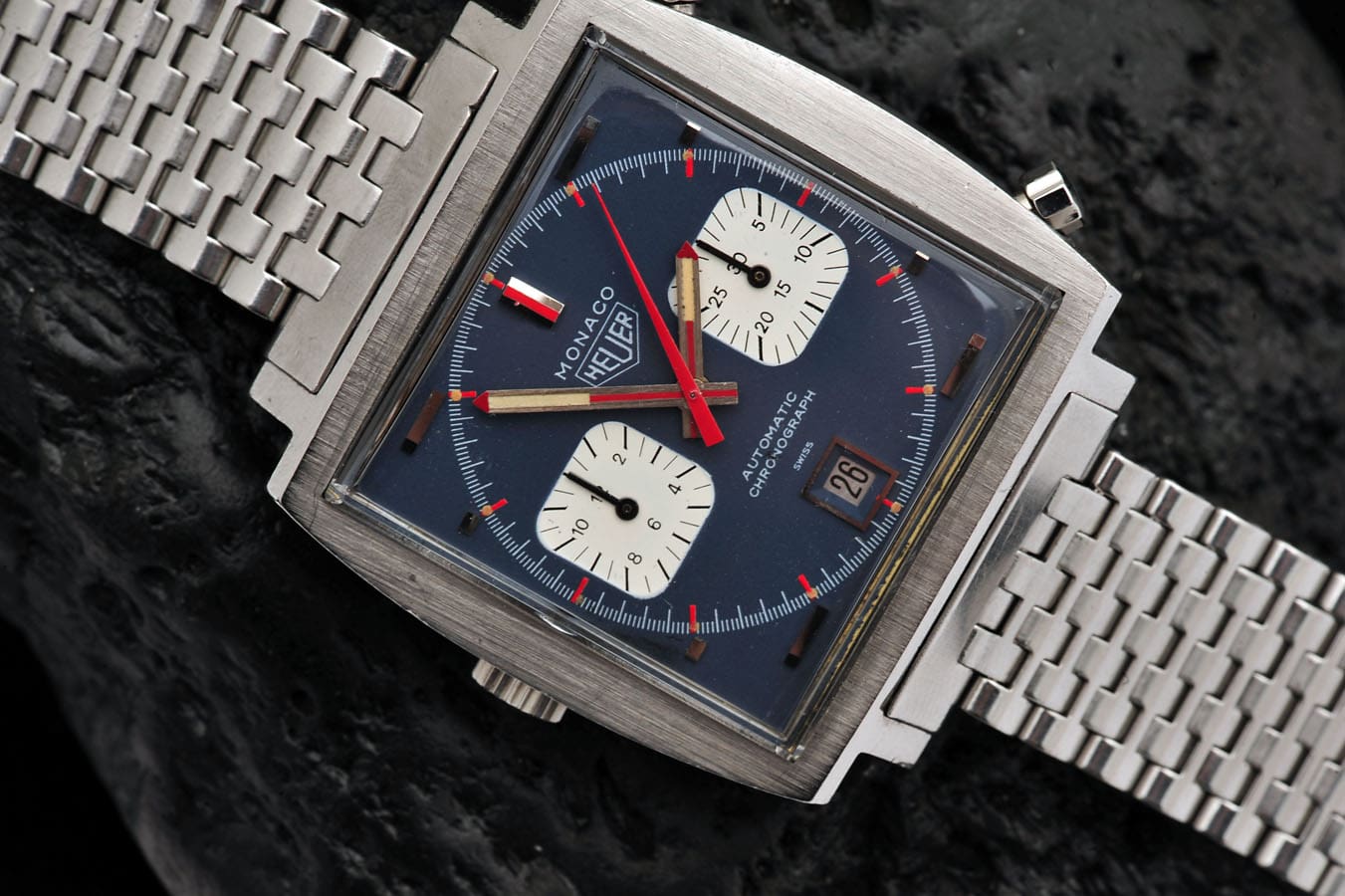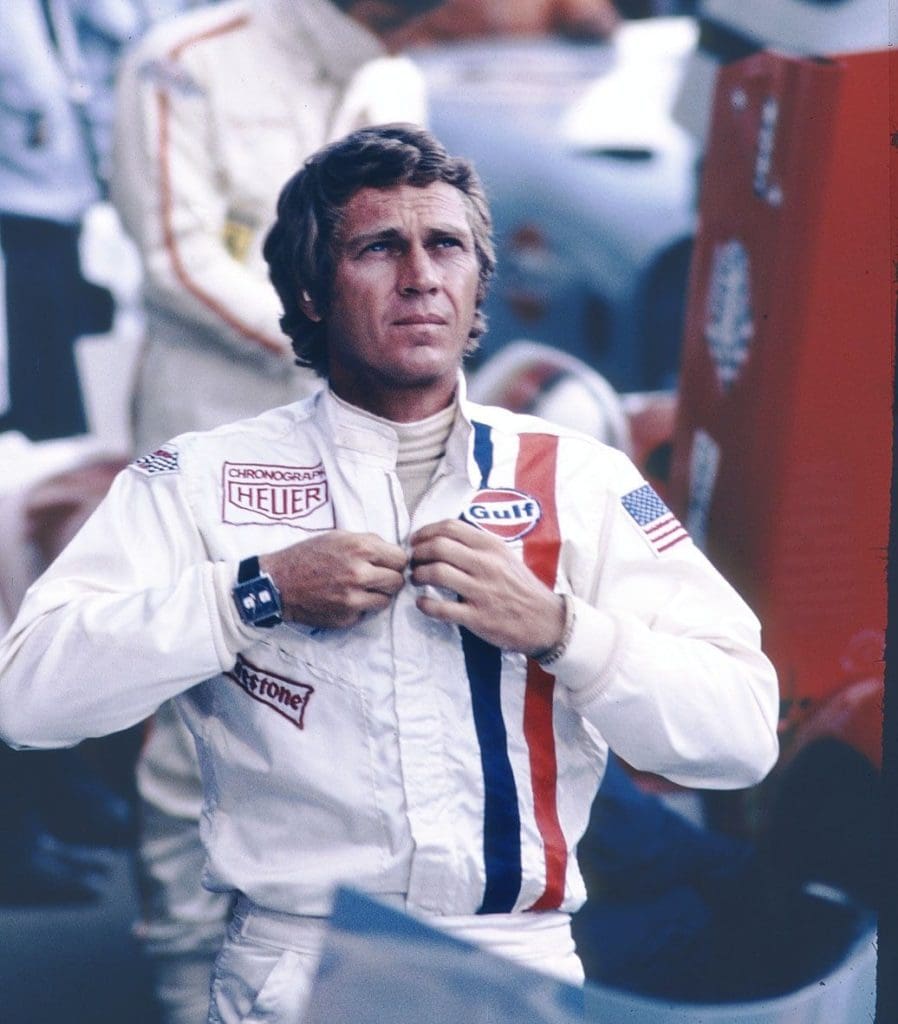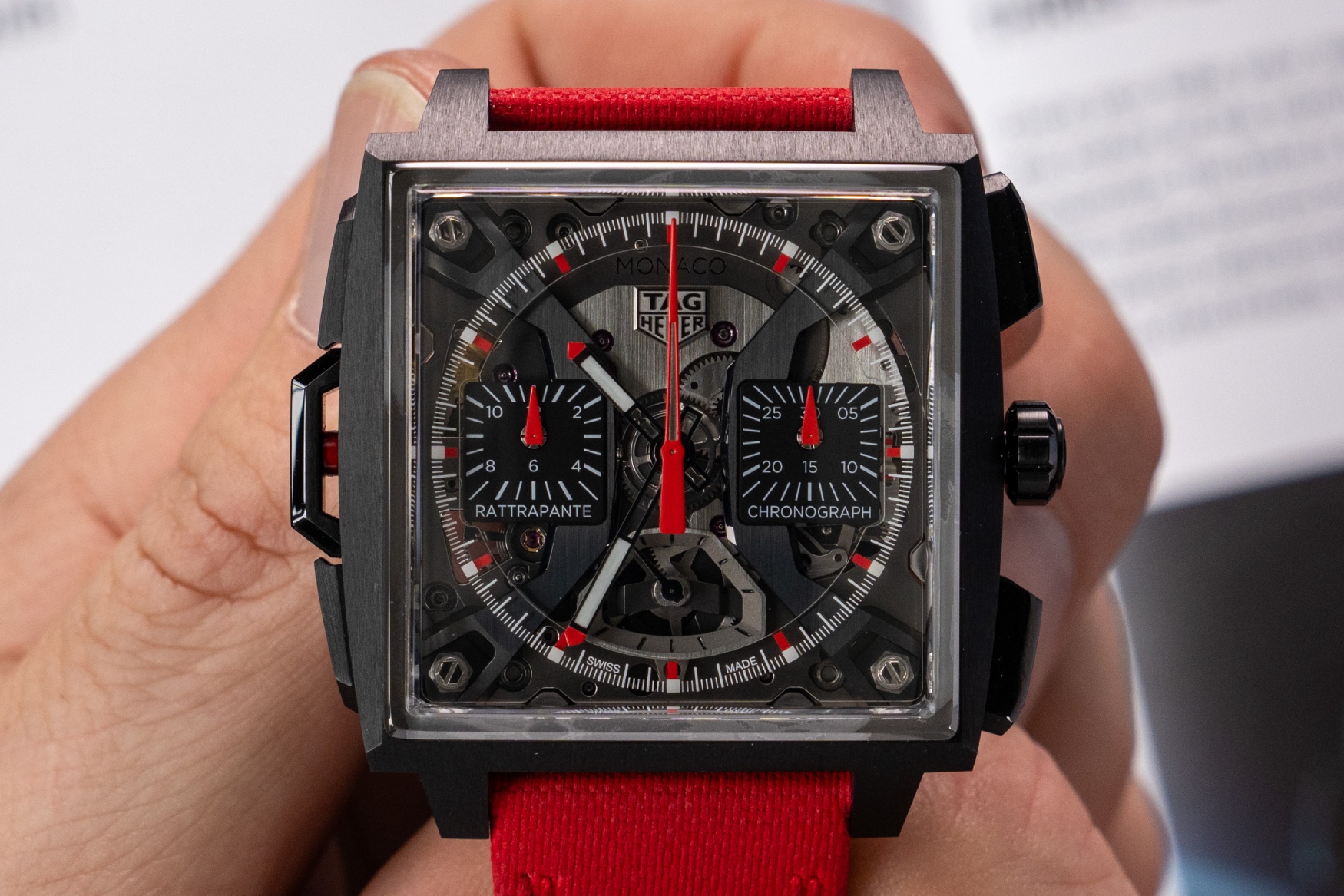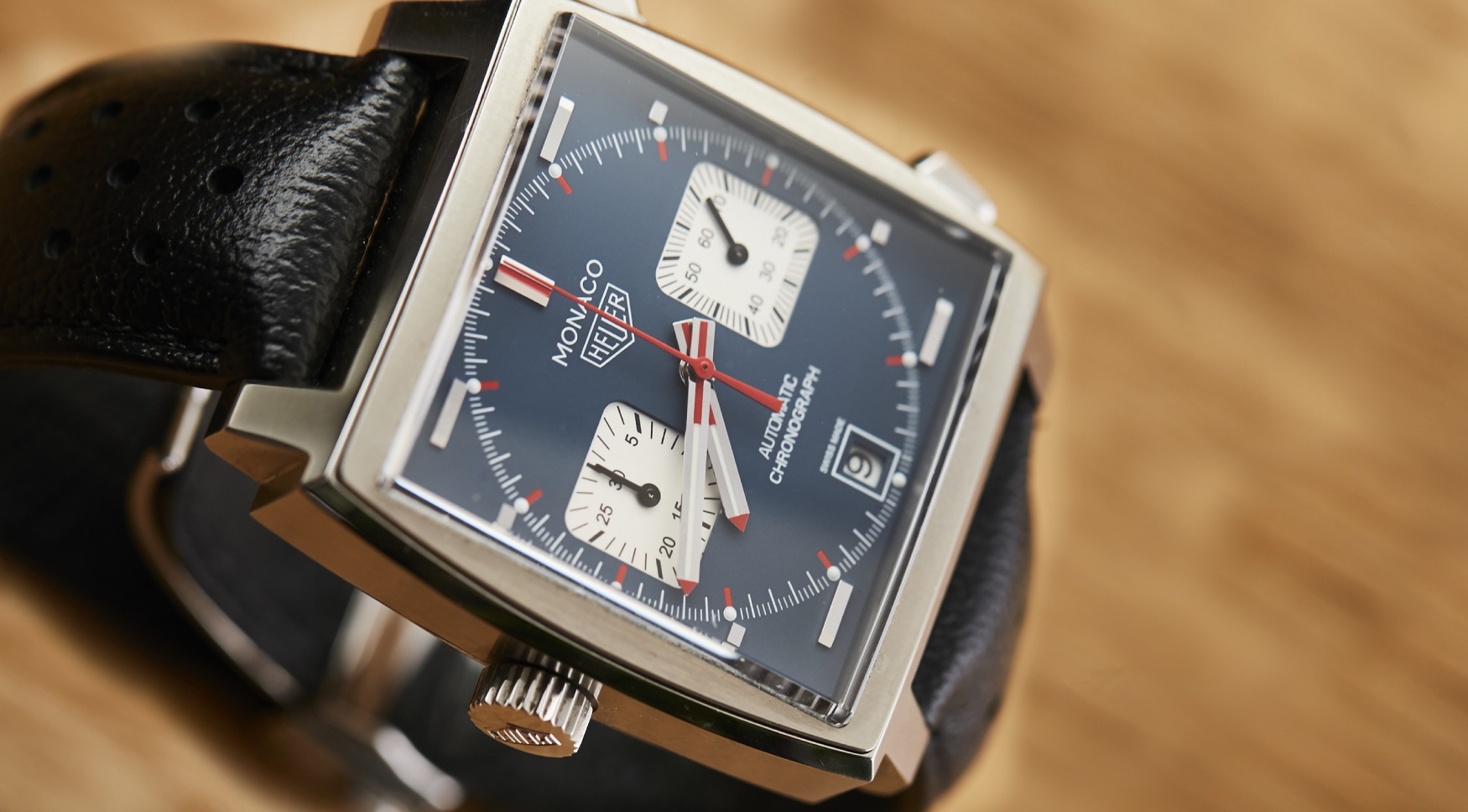Why the TAG Heuer Monaco is still the watch world’s ultimate square deal
Jamie WeissSpeed and precision. Engineering and craftsmanship. No sport offers the visceral thrills of motor racing, no timepiece is more purpose-built for speed than the chronograph, and among iconic racing chronographs – including the Rolex Daytona and the Omega Speedmaster – the one with the most direct connection to motorsport is the (TAG) Heuer Monaco. That’s a bold statement, considering TAG Heuer is the motorsports watch brand, with other racing icons such as the Autavia and Carrera in its catalogue. But among these, the Monaco reigns supreme: not just because it’s named after one of the most famous and glamorous locations in all of motor racing, but because of its unique aesthetic and history.
Early history

1969 was a watershed year for the chronograph watch (and not just because the Speedmaster went to the moon). With the so-called quartz crisis knocking on the door of the Swiss watch industry, 1969 saw the introduction of the automatic chronograph movement, with Seiko’s 6139, Zenith’s El Primero, and the Chronomatic (a joint venture with Heuer, Hamilton/Buren, Dubois-Depraz, and Breitling) all making their debuts. In an effort to make a splash and stand out from its rivals, Heuer set itself apart by putting the Chronomatic (which it marketed as the Heuer Calibre 11) into a 39 mm water-resistant square case, distinguishing its entry from its more conventionally round-cased competition.

The bold blue dial was highlighted by squared white chrono subdials, and punctuated with hands and markers violently slashed in red. It looked like nothing else out there. Thus, the Monaco (named after the legendary Monaco Grand Prix) was thrust into the spotlight, the world’s first square automatic chronograph, borne from a cloud of tyre smoke and vaporized petrol.

The Monaco’s most recognizable feature, that iconic case shape, presented some real technical puzzles to solve – most notably waterproofing a square-cased chronograph. Sure, square-cased watches had come before, but making those case shapes water-resistant is a challenge: if you’ve got a square case, you need a square gasket, for instance. The additional challenge of the chronograph pushers proved to be a real feat, but Heuer managed to enlist some outside help from Swiss casemaker Piquerez (best known for its Compressor and Super Compressor case designs and a supplier to brands including Breguet, Enicar, Hamilton, Jaeger-LeCoultre, Longines and Universal Genève) to execute the Monaco.

They also gained some real credibility in the racing community via the first Heuer brand ambassador, Formula 1 driver Jo Siffert. Siffert would be the first of many F1 drivers to wear Heuer watches (however it’s worth pointing out that Siffert famously wore an Autavia rather than a Monaco or Carrera). Not long after coming on board, Siffert was tapped to serve as a technical advisor for the landmark Le Mans film, starring Steve McQueen, and thus a legend was born…
Rise to fame

Already a household name from starring roles in The Magnificent Seven, The Great Escape, Bullitt, and The Thomas Crown Affair, McQueen was also a serious race driver, and that passion was poured into his 1971 film, which was shot in part during the 1971 24 Hours of Le Mans. McQueen wore the Monaco ref. 1133B throughout filming, thus cementing that reference’s exalted place in the eyes of collectors. Of course, McQueen, known as “the King of Cool”, occupies a particularly special place in watch culture: the original Rolex Explorer II ref. 1655 is nicknamed after him (although it’s worth pointing out that he never wore an Explorer II himself: he mostly wore a Submariner, actually). But the Heuer Monaco is the watch most closely associated with him, and McQueen more than any other figure helped make the Monaco an icon.

Throughout the 70s, Heuer would release a number of shaped chronographs named after other famous racing locations, such as the tonneau-shaped Monza (which was recently revived in carbon fibre) and the squircular Silverstone, but none would be quite as popular as the Monaco. Another notable Monaco produced during this era was the ref. 74033 released in 1974, which is unofficially known as the “Dark Lord”. An early example of PVD coating in watchmaking, only around 100-200 Dark Lords were produced, making them highly collectible in today’s market.
The Monaco’s decline (and revival)

Despite the star power associated with the Monaco, its success wasn’t built to last. By the mid-70s, due to changing tastes and the dominance of quartz watches in the marketplace, the model disappeared from Heuer’s catalogue. Heuer gradually lost their mojo, and were in somewhat dire straits when they were bought out by Techniques d’Avant Garde in 1986, thus birthing the TAG Heuer moniker. The company began an aggressive new marketing direction and enlisted the racing drivers of the day to introduce new quartz-based lines, like the colourful composite-cased Formula 1 (which TAG brought back in a big way in 2024 through a collaboration with NYC streetwear brand KITH) and the S/el, endorsed by Brazilian F1 legend Ayrton Senna.

The newly-formed TAG Heuer saw great success in the go-go ’80s due to their forward-leaning designs, but alas, much of Heuer’s heritage seemed destined for the dustbin of history. The ensuing years saw much of TAG Heuer’s product line growing bigger, bulkier and (some might argue) blander – but the rise of collectors’ interest in the historic models of the past was just around the corner. The McQueen legend grew exponentially after his death in 1980, and the Monaco’s cachet along with it. After laying dormant for years, TAG Heuer finally relaunched the Monaco in 1997, and while not an exact reissue of the vintage reference, the old Heuer logo was resurrected in tribute. The vintage watch renaissance was on the rise, and the ref. CS2110 was the first in the modern Monaco lineup.

Subsequent models followed, hewing closer to the classic originals with every subsequent release, with some including a return to the original horizontal dial markers and left-hand crown. TAG Heuer has released some stunning limited editions along the way, and they’re well worth seeking out. These days, the Monaco has reaffirmed its status as one of watch culture’s most iconic timepieces.
Famous wearers

Besides McQueen himself, the Monaco has gained quite a number of more contemporary well-known fans and screen appearances. Actor Patrick Dempsey (a fine racer himself) is a Monaco aficionado, with several references in his collection. Bryan Cranston famously wore one as Walter White’s alter ego, Heisenberg, in his turn as the antihero of Breaking Bad. Call it a coincidence, but a triumvirate of superheroes from the Marvel Cinematic Universe are fans, with Chris Hemsworth (Thor), Jeremy Renner (Hawkeye) and Tom Holland (Spider-Man) all rocking the Monaco.
The most famous Monaco wearer today however is undoubtedly the now-four-time F1 World Champion Max Verstappen, who is almost always seen wearing a Monaco model of some description when he’s not behind the wheel of his Red Bull car, thanks to his team’s partnership with TAG Heuer. His favourite seems to be the Monaco Titan ref. CAW218B.FC6496, but he also owns a number of commemorative piece unique Monacos, including unique versions of the revived Dark Lord and the Monaco Split-Seconds.
Notable models

First off, the OG (or as close as you can get to the OG in TAG’s current catalogue): the ref. CAW211P.FC6356 is the modern iteration of the McQueen model. It’s got all the classic design cues, including the blue/white dial with red accents, the left-hand crown and the horizontal applied indices – but it adds a modern sapphire caseback with the contemporary Calibre 11 movement on view. (Confusingly, this “Calibre 11” is actually based on an ETA/Sellita movement; it’s not a Chronomatic.) It wears a vintage-style black perforated leather racing strap and is really the one Monaco to get if you only need one.

Next is one of the coolest special editions in TAG’s current lineup, the ref. CBL2115.FC6494, which is decked out in the iconic blue and orange brand colours of Gulf Oil. Gulf liveries have graced many famous race cars, such as the 1966 Ford GT, numerous McLaren and Williams F1 cars, and of course, the Porsche 917K McQueen drove in Le Mans. The beautiful blue sunray dial features the Gulf logo above 6, and a pair of racing stripes streaking down the right side of the dial.

One of the most notable Monaco models in recent memory is the Monaco Split-Seconds Chronograph. First produced as a piece unique for the delayed Only Watch 2023 auction, this model has since been entered series production and boasts TAG Heuer’s first mechanical split-seconds chronograph movement, the Calibre TH81-00, marking TAG Heuer’s return to producing higher complication movements. Its skeletonised dial is particularly eye-catching, as is its novel caseback: the entire bottom ‘sandwich’ of the case is made from a single piece of sapphire in order to further exhibit its movement.




